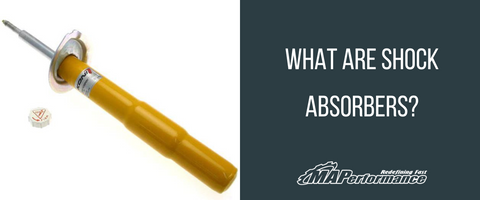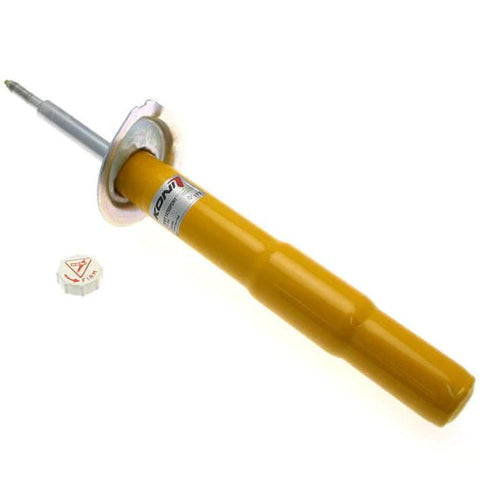Comfort - we all crave it. But achieving comfort is easier said than done, especially when you're driving on a bumpy road. That's where shock absorbers come in. By definition, a shock absorber is a device that is designed to smooth out bumps and jolts by absorbing and dissipating the energy that is created when the wheels of a vehicle hit a bump or dip in the road. In other words, it makes the ride smoother and more comfortable for both the driver and passengers. But how do shock absorbers work? And what are the different types of shock absorbers? We're going to answer all of these questions and more in this comprehensive guide. So, if you want to learn everything there is to know about shock absorbers, keep reading!
What Are Shock Absorbers?
Shock absorbers are devices that reduce the amount of energy transmitted to a vehicle while driving over uneven surfaces, such as roads with potholes or bumps. Shock absorbers are typically located at each wheel of a vehicle and consist of a piston that moves up and down within its cylinder (hence their name).
When your car hits an obstacle in the road, it jolts upward due to momentum—but when it hits something harder like a pothole or bump in the road, it has nowhere else to go but up! This causes a harsh reaction from your body as well as your vehicle's suspension system (tires and springs), which can damage both if not properly controlled through the proper use of dampers (which include shock absorbers).
Shock absorbers are what controls the amount of force that is transferred between your vehicle and the road. They do this by taking up some of the energy produced when a bump or hole in the road causes your car to bounce, which reduces the impact on other components such as springs, tires, and even your body!
What Types of Shock Absorbers Are There?
1) Conventional Shock Absorbers
Conventional shock absorbers are the most widely used type of shock absorber. They can be found on most vehicles, from family sedans to trucks, vans, 2x4s, etc. These are also known as hydraulic or gas-charged shock absorbers.
The hydraulic piston is located inside the shock absorber body, and it's connected to a rod that connects to the bottom of the piston. When you drive over bumps in the road, vibrations are transmitted through the suspension system until they reach the pistons inside of each shock absorber. The pistons then compress or extend depending on how fast you're going and how hard you hit those bumps in the road. This motion causes oil within the body of each shock absorber to move back and forth between chambers—this creates resistance against movement caused by bumps in the road, which reduces vibrations that would otherwise be transmitted throughout your vehicle's body and chassis.
This type of shock absorber is very common because it has high durability and can withstand a lot of abuse over time without wearing down significantly. It's also relatively inexpensive compared with other types of shock absorbers available today (such as twin-tube shocks).
2) Strut Shock Absorbers
Strut shock absorbers are a type of shock absorber that is designed to work on a car's suspension. The strut is the part of the car that holds up the wheels and connects them to the chassis. Strut shock absorbers are typically found in front-wheel drive cars, but they can also be found in rear-wheel drive vehicles.
Strut shock absorbers are made up of two parts: an inner piston and an outer cylinder. The inner piston is connected to the car's brake caliper and rotates when you press down on your brake pedal. The outer cylinder is connected to the upper control arm of your car's suspension system, which allows it to move in response to impacts like bumps or potholes in the road.
When you apply pressure through your foot on your brake pedal, it creates resistance against the inner piston so that your car slows down more quickly than if there were no friction between these parts (this is called viscous dampening). The amount of resistance depends on how hard you press down on your foot—the harder you press down, the more resistance will be created between these parts, and therefore, less force will be sent back into your car's suspension system due to the changing road surface.
3) Spring Seat Shock Absorbers
Spring seat shocks are one of the most common types of shock absorbers. They're also called "hydraulic bump stops" because they use hydraulic pressure to work, and they're a popular choice for off-road vehicles.
Most spring seat shock absorbers have three main parts: a reservoir, a piston chamber, and a cylinder. The reservoir is filled with hydraulic fluid that's pressurized by an external pump or compressor—it's usually filled with nitrogen gas or oil. The piston chamber is located inside the cylinder, and it's separated from the reservoir by a check valve (also called an internal valve). The piston opens and closes this check valve when it moves up or down in its cylinder. When your car goes over an obstacle on the road, the piston moves in its cylinder, which compresses the hydraulic fluid in both chambers—this causes you to feel fewer jolts from bumps in the road.
There are many different kinds of spring seat shock absorbers in today's market; some have springs that are double-acting (they compress when going up over obstacles), while others are single-acting (they only compress when going down). Single-acting spring seats have more friction than double-acting ones, which is why they are less expensive. Double-acting spring seats have a greater range of adjustment, but they require more maintenance than single-acting ones because their springs wear out faster.
How Do Shock Absorbers Work Exactly?
Shock absorbers are a critical part of the suspension system in your vehicle, and they do a lot more than you might realize.
Shock absorbers are responsible for keeping your vehicle stable when driving on roads with bumps or potholes, and they also help control the amount of bounce you experience when you hit a bump.
Shock absorbers are generally made up of two basic parts: a piston and a spring (depending on the model). The piston is connected to the wheel hub and moves up and down with every bounce of the suspension. The spring is attached to the piston and holds it in place when there's no force acting on it (like when you're driving straight). When you hit a bump in the road, however, that force triggers a change in pressure inside the shock absorber—and that change in pressure causes the piston to move up or down, depending on how much force was applied to it.
As the piston moves up or down, it compresses or decompresses air inside the shock body. This changes how much fluid is pushed through small holes at either end of each shock body; this process allows for frictionless movement between two metal plates within each cylinder (one plate is stationary while another moves back and forth along its surface). That frictionless movement produces resistance that causes the spring to compress, which in turn produces resistance that causes your tires to grip the road. The result is a smooth ride and better handling.
In essence, the working of a shock absorber can be summarized in 5 points:
- The spring is the first part of the shock absorber. It compresses when the car hits something and then expands back to its original size. This movement produces an oscillation force that oscillates between two points.
- The piston converts this oscillating force into rotational motion, which is transmitted to the steering wheel via a steering arm.
- The damper is placed at the end of the piston so that it will absorb energy from any additional movement and prevent it from reaching the steering wheel or chassis.
- The valve creates negative pressure inside the reservoir chamber and pushes oil out through check valves into the cylinder chamber, where it acts as a hydraulic damper on piston movement. This creates a more consistent ride quality for passengers in the vehicle.
- Finally, springs return dampers back to their original position after each compression cycle has ended so that they can be used again on another vehicle ride down a bumpy road or driveway.
So, shock absorbers are a vital part of your car's suspension system. If they fail, it can lead to serious damage to your vehicle and possibly even an accident. If you feel that your vehicle's suspension is damaged or not working properly, it's important that you have your vehicle serviced immediately. The longer you wait to have the problem diagnosed and repaired, the more likely it is that other components of your car will be damaged as well.
MAPerformance Has Shocks and Other Suspension Items for Sale
Being a customer-first company, MAPerformance understands that customers are looking for the best quality parts at a fair price. That's why we offer the highest quality shock and suspension products from Nolathane, Whiteline, Hardrace, and every other known brand in the industry. We make sure that every part we sell is tested and guaranteed to fit your vehicle before it leaves our store. So if you need aftermarket suspension parts for sale, MAPerformance is the place to go!






Comments (0)
There are no comments for this article. Be the first one to leave a message!